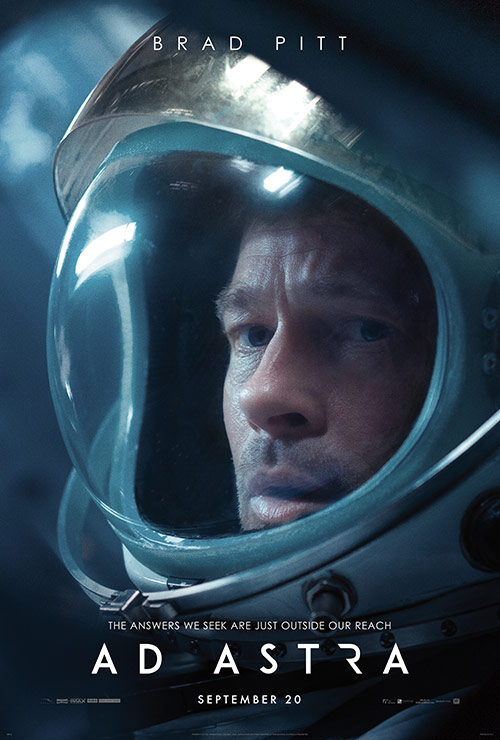Review (Spoiler-Free): Ad Astra is a Thrilling, Gorgeous Sci-Fi Epic
20th Century Fox/Walt Disney Studios Motion Pictures
Brad Pitt plays an lonely astronaut searching for answers in “Ad Astra.”
September 25, 2019
Sci-fi thriller “Ad Astra,” released September 20, delivers a powerful, beautiful look at family bonds and the future of human expansion while also showcasing some of the best visuals ever seen in a sci-fi film.
The film, set in “the near future,” follows astronaut Roy McBride (Brad Pitt) across our solar system as he journeys to find his father, Clifford McBride (Tommy Lee Jones). Clifford was sent as commander of a mission, the “Lima Project,” to travel beyond Neptune and search for extraterrestrial life beyond our solar system, 30 years prior to the events of the movie; however, all communications stopped 13 years into the mission, and the crew is presumed to be dead. After the solar system is wracked by destructive electrical storms that are tracked to be coming from somewhere in Neptune’s orbit, Space Command believes that he may still be alive, and somehow may be causing the storms.They on a mission into deep space to try to find his father and stop the storms.
The worldbuilding and production design is fantastic. Gray takes a cynical look at our near future; space travel to the moon is now a publicly available enterprise, managed by Virgin Atlantic, but a pillow and blanket for the flight costs $125. The moon has a bustling, permanent U.S. settlement, but the sense of wonder is gone; cardboard astronaut cutouts and photo opportunities for little kids are everywhere, and the dark concrete halls are clad with Earthen comforts, like Applebee’s, Subway, and even a DHL. Elsewhere on the moon, it is a lawless, barren landscape, home to marauding space pirates (not the fun, Matt Damon kind from “The Martian”) and military bases. Mars is home to a dreary, claustrophobic, dim orange-hued base with “comfort rooms,” where images of nature dance around the walls to try to bring any semblance of life into the lifeless base. Space is less a thing of wonder and more a dirtied, wild west-like desert; all these details give one the idea that Roy is utterly and totally alone far before he ventures into the deep ends of our solar system.
The cinematography, too, is incredible. Gray partners with cinematographer Hoyte van Hoytema, who notably worked on another space epic, “Interstellar,” to deliver a visually stunning film. Every shot is deliberate, from gorgeous rocket launches, to the stark contrast of shadows on the moon, to the icy blue rings of Neptune against the emptiness of deep space.
The movie is a slow-burn, tense thriller. In that regard, the trailer, which highlights some of the more action-packed setpieces, is a bit misleading. While the action sequences are fewer and farther in between than expected, they certainly pack a punch, especially the opening sequence. Some of the science in the plot is a bit weak; while the movie does a great job of envisioning many realistic aspects of future space travel and colonization, a few things are missing, namely not showing reduced gravity on the Moon. However, the plot is mainly a vehicle for Gray to tell a different story, about the bond between father and son, and he does that well. While there are some scientific inaccuracies, they are hardly noticeable, and far from important in one’s enjoyment of the movie.
“Ad Astra” is not an action movie; while it has some great, tense moments, moviegoers should not come expecting an action movie. It is, however, a fantastic, tense, sci-fi thriller dripping with gorgeous shots. Like past great sci-fi epics such as “Interstellar” and “2001: A Space Odyssey,” it deserves to be seen on the biggest screen possible.
Rating: ★★★★★★★★★☆


